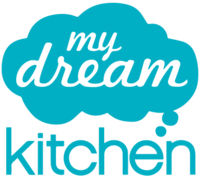Kitchens, whether big or small, can be quite costly. However, there are smart strategies to help keep the costs manageable.
1. Appliances
- Shop for Package Deals: Look for package deals at appliance retailers such as Kitchen Things, Noel Leeming, Harvey Norman, and Magness Benrow. Consider requesting a bundle that includes a hob, oven(s), extractor, fridge, microwave, even sinks. Standard, well-established brands often provide reliability and good servicing availability, making them a sensible long-term choice. Be aware that integrated appliances typically cost more as they require custom cabinetry fronts.
- Choose Energy-Efficient Models: Opt for energy-efficient appliances to save on long-term costs. Look for the energy rating labels that help inform your choices.
- Consider Induction Hobs: These provide instant heat but check your wiring capacity and your pots to ensure compatibility.
2. Avoid Moving Plumbing and Electrical Fittings
Changing the location of plumbing or electrical fittings can increase costs significantly. If changes are unavoidable, minimizing them can help save money on plumber and electrician fees.
3. Avoid Structural Building Work
Structural changes, such as enlarging or adding rooms and altering walls, require a builder and can be subject to costly and unpredictable building consents.
4. Kitchen Design
- Cabinet Options: Base unit cupboards with doors are cheaper than drawer units, and open shelving is the more economical still. Sculleries can be a good place for using open shelves, offering easy access while saving costs.
- Consider Floating Shelves: These can add extra storage space without the added expense of cabinetry.
- Minimize Unusual Angles: Avoiding unique angles and shapes in cabinetry will reduce labour costs.
- Profile Panels: Profile panels to give a farmhouse or Hamptons look often come at a premium due additional labour and finishing. Consider limiting their use to key areas to achieve the desired effect.
5. Flooring
Vinyl and laminate flooring are the most affordable, priced around $43/m². Natural wood costs vary depending on species, typically between $100-$350/m², while tiles range from $45 to $200/m² depending on selection.
6. Do Some Initial Work Yourself
Enlist the help of a skilled relative or friend to tackle tasks such as removing the old kitchen and making simple wall repairs. Selling or giving away the old kitchen can save on disposal costs. If possible, consider fitting the new kitchen yourself to reduce installation charges, but this is for skilled persons only. Can you deliver the kitchen to site to save on delivery costs – this is typically only feasible for small kitchens?
7. Reuse Kitchen Components
Evaluate whether all aspects of the kitchen need replacing. Sometimes, simply updating by replacing panels, doors and drawer fronts can refresh the space, provided the underlying structure is sound.
8. Reconsider Kitchen Hardware Fittings
Assess the necessity of additional hardware fittings, like corner cabinet hardware and pullouts; focus your budget on items that you'll use frequently, rather than those that may rarely see use.
9. Review Cabinetry Materials
Melteca is a durable and most cost-effective option available in various finishes. For a sophisticated look, consider adding a second colour or wood effect.
Veneer, lacquered, acrylic or thermowrap wrapped panels will add to your costs. Consider limiting their use to feature seen areas.
10. Splashbacks
The size, notches, and cutouts will influence splashback costs. Generally, tiles are a budget-friendly choice, creatively laid out adds extra flair. Stone splashbacks to match the benchtop are increasingly popular and often comparable to glass in terms of price and durability.
Glass gives the option of any colour and also use of photos or artwork.
11. Benchtops
Benchtops can account for up to a third of kitchen costs. In terms of affordability, laminate is the cheapest, followed by engineered stone, stainless steel, acrylics, natural solid wood, concrete, and ceramic (e.g., Dekton).
Be mindful of the bench thickness; opting for thinner materials (e.g., 20mm) may save costs compared to more thicker options. Explore various price points from suppliers, as more complex designs and colours can drive up expenses.
12. Lighting
Lighting has the power to transform a kitchen and enhance its atmosphere. LED lights are cost-effective and can be strategically incorporated into cabinetry. Using sensors can further reduce operational costs. A few LED spot lights will be cheaper than long runs of LED strips.
Summary
Provide your designer with a clear budget from the outset to ensure the best outcome for your kitchen renovation. They don’t want to design a kitchen that you can’t afford or one that doesn’t tick all your boxes.
They are there to balance your needs and financial constraints, while delivering a highly desirable functional space for you.




